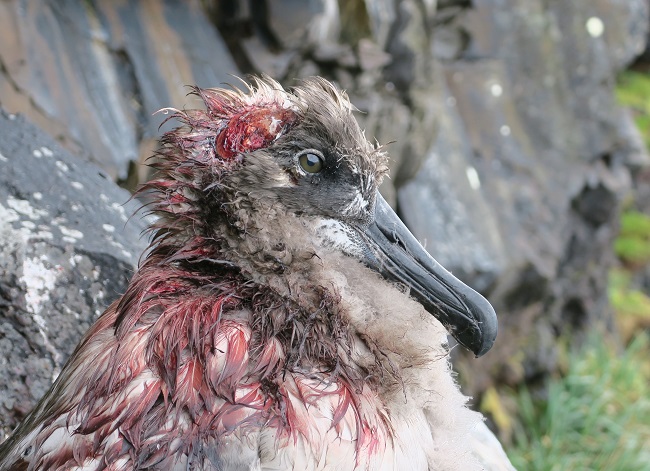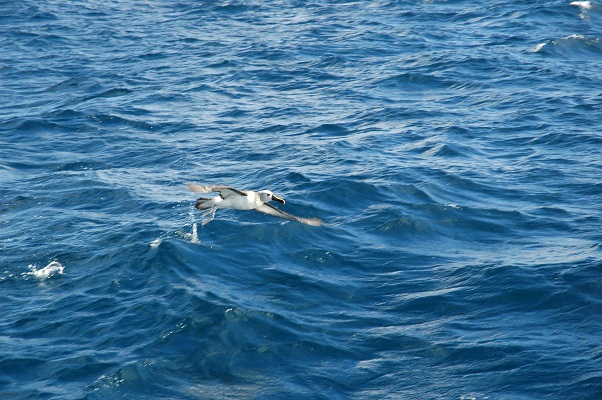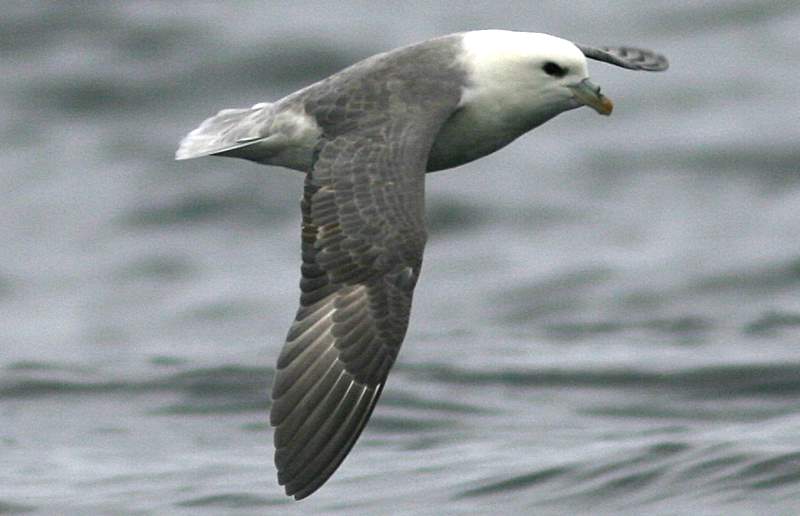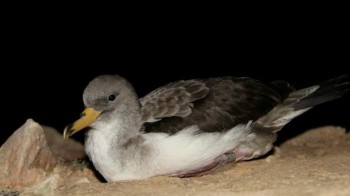ACAP Latest News has regularly reported on the deprivations introduced House Mice Mus musculus are causing to surface- and burrow-nesting seabirds on South Africa’s sub-Antarctic Marion Island, including to four species of ACAP-listed and globally threatened albatrosses (click here).

A Light-mantled Sooty Albatross Phoebetria palpebrata "scalped" by mice on Marion Island, photograph by Peter Ryan
In the most recent posting describing disturbing attacks by mice on Marion’s albatrosses it was stated that “South Africa is now considering making an eradication attempt on the island, as briefly mentioned in its Implementation Report (AC10 Inf 10) to ACAP’s meetings in Wellington, New Zealand [last year]” (click here).
As well as by research publications listed in the recent post this consideration was influenced by a feasibility study conducted in 2015 by island eradication expert John Parkes from New Zealand. Inter alia, his feasibility study calls for increased knowledge of the island’s mice needed to ensure a high chance of their eradication.
An Environmental Officer to spend a year on the island from April is to be appointed. The appointee’s work programme will concentrate on conducting field work on the mice with the following topics to be covered:
- Conduct a large-scale bait uptake trial by mice at Marion Island in May 2018;
- Assess lethal doses of poison bait on captive mice;
- Conduct regular surveys of mouse breeding status over winter (April-October);
- Estimate crude densities of mice across an altitudinal gradient through the target baiting period (May-September); and
- Monitor cloud heights over the baiting window using remote cameras.
Read more here.
Reference:
Parkes, J. 2016. Eradication of House Mice Mus musculus from Marion Island: a review of feasibility, constraints and risks. BirdLife South Africa Occasional Report Series No. 1. Johannesburg: BirdLife South Africa.
John Cooper, ACAP Information Officer, 30 January 2018

 English
English  Français
Français  Español
Español 





